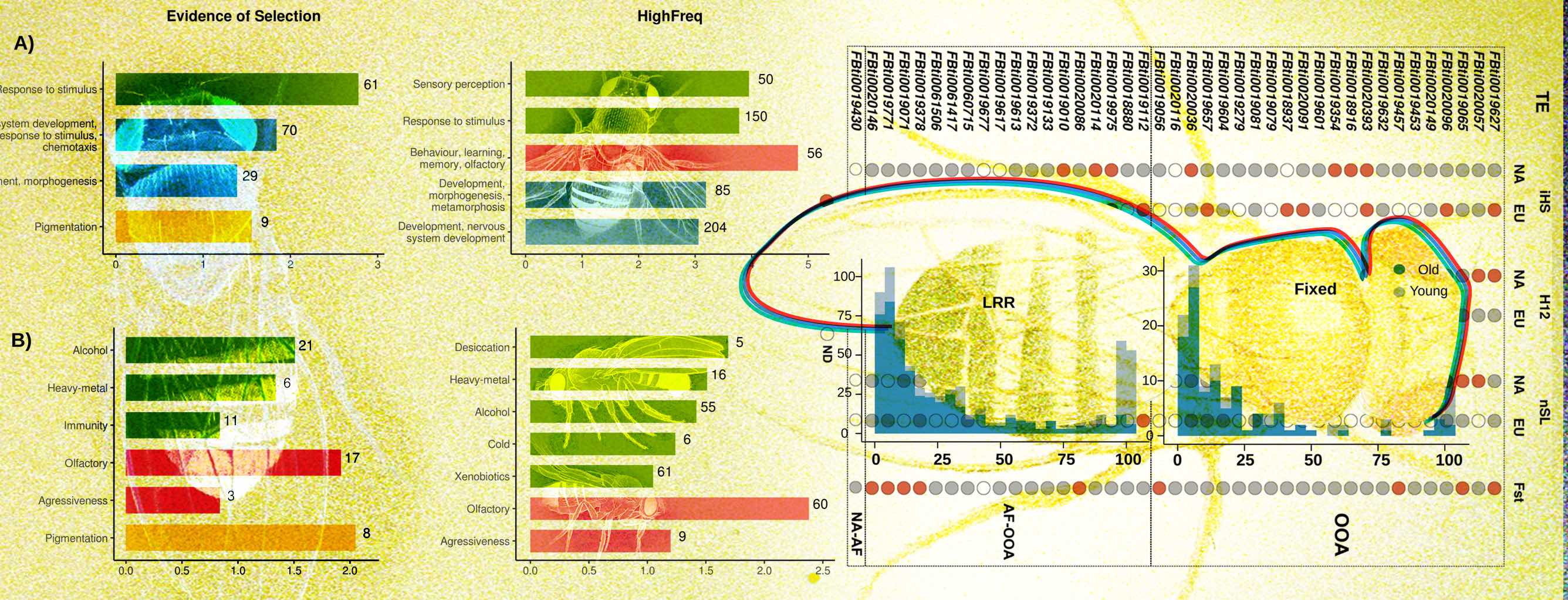Institut de Biologia Evolutiva - CSIC UPF
Identifiquen el paper crucial dels elements mòbils de l'ADN en la resposta a l'estrès, el desenvolupament i el comportament
Identifiquen el paper crucial dels elements mòbils de l'ADN en la resposta a l'estrès, el desenvolupament i el comportament
Investigadors de l'Institut de Biologia Evolutiva (CSIC-UPF) han identificat 300 elements mòbils de l'ADN que contribueixen a l'adaptació a l'ambient, clau per a l'evolució de les espècies.
Publicat en PLOS Genetics, es tracta de l'estudi més extens fins avui, amb l'anàlisi dels elements mòbils de l'ADN de 60 poblacions naturals de mosca de la fruita.
El treball llança llum sobre els mecanismes d'adaptació implicats en la resposta a l'estrès, el desenvolupament embrionari o el comportament.

Un estudi internacional liderat per Josefa González, investigadora principal de l'Institut de Biologia Evolutiva (IBE), centre mixt del Consejo Superior de Investigaciones Científicas (CSIC) i la Universitat Pompeu Fabra (UPF), revela que els elements mòbils de l'ADN tenen un paper rellevant per a l'adaptació a l'ambient. L'estudi, publicat en la revista PLOS Genetics, ha identificat 300 elements mòbils de l'ADN implicats en l'adaptació al medi. Sent el més extens realitzat fins avui, amb l'anàlisi de 60 poblacions de mosca de la fruita, el treball revela que la resposta a l'estrès, el desenvolupament embrionari o el comportament estan influenciats per aquestes modificacions genètiques.
Els elements mòbils com a motor de l'adaptació
La diversitat biològica està íntimament relacionada amb les mutacions genètiques dels organismes. Algunes d'aquestes modificacions són causades pels elements mòbils de l'ADN, fragments de genoma que poden moure's d'un lloc a un altre del material genètic provocant molts canvis o mutacions. En els humans, es calcula que més de dos terços del genoma el comprenen els elements mòbils. Generalment, aquestes mutacions són nocives per a l'organisme o no hi tenen cap efecte. No obstant això, algunes d'aquestes variacions són beneficioses - causant un avantatge evolutiu a alguns individus - i s'acaben perpetuant en les poblacions.
L'equip de la Dra. Josefa González ha estudiat fins a 1615 d'aquests elements mòbils en la mosca de la fruita per a revelar el seu paper en els mecanismes d'adaptació a l'ambient. “Hem observat que les mutacions induïdes per elements mòbils en l'ADN estan íntimament relacionades amb l'adaptació de la mosca de la fruita al seu hàbitat”, comenta Josefa González, investigadora principal a l'IBE (CSIC-UPF) i responsable de l'estudi. En particular, l'estudi revela que la resposta a l'estrès, el desenvolupament embrionari o el comportament podrien estar modulats pels elements mòbils de l'ADN.
Drosophila Melanogaster: un model per a estudiar l'adaptació al medi
La ràpida adaptació de Drosophila melanogaster (o mosca de la fruita) als diferents hàbitats i climes la converteix en un bon model per a entendre el funcionament de la selecció natural i l'evolució. “És un organisme amb un genoma àmpliament estudiat, la qual cosa ens ajuda a treure conclusions respecte als canvis que s'hi observen”, comenta el Dr. Gabriel Rech, investigador postdoctoral en l'IBE i primer autor de l'estudi.
El treball realitzat ha estat titànic. El grup de Genòmica evolutiva y funcional de l'IBE, liderat per Josefa González, ha identificat 62 mutacions implicades en adaptació, 51 d'elles descrites en aquest treball per primera vegada. "Encara que hem identificat 62 elements mòbils implicats en l'adaptació al medi, hi ha entorn de 300 candidats que podrien estar implicats en aquests mecanismes i que encara desconeixem en profunditat”, afegeix la Dra. González.
Llegint les claus de l'evolució en els elements mòbils de l'ADN
Encara que la majoria d'estudis se centren en estudiar la part codificant de l'ADN, és a dir, els gens que produeixen proteïnes, els últims avanços assenyalen al paper dels elements mòbils de l'ADN en processos biològics essencials. “No podem oblidar que es tracta de més de la meitat del nostre genoma; de moment hem vist que els elements mòbils són importants per a l'adaptació a l'ambient, però encara desconeixem totes les funcions que compleixen en l'organisme”, comenta la Dra. González.
Entendre el paper dels elements mòbils del genoma en l'adaptació pot ser crucial per a desxifrar les claus de l'evolució en moltes espècies, però també per a entendre els mecanismes de resistència d'alguns bacteris als antibiòtics o a fàrmacs com la quimioteràpia.
El treball forma part d'un projecte científic finançat pel Consell de Recerca Europeu (ERC).
La investigadora Josefa González co-lidera la xarxa Europea DrosEU, destinada a estudiar la variació genètica a gran escala en la mosca de la fruita. També co-lidera la plataforma de divulgació La ciència al teu món i co-dirigeix un projecte de ciència ciudadana.
Article de referència: Gabriel E. Rech et al. Stress response, behavior, and development are shaped by transposable element-induced mutations in Drosophila. PLOS Genetics; February 12, 2019; DOI: https://doi.org/10.1371/journal.pgen.1007900
